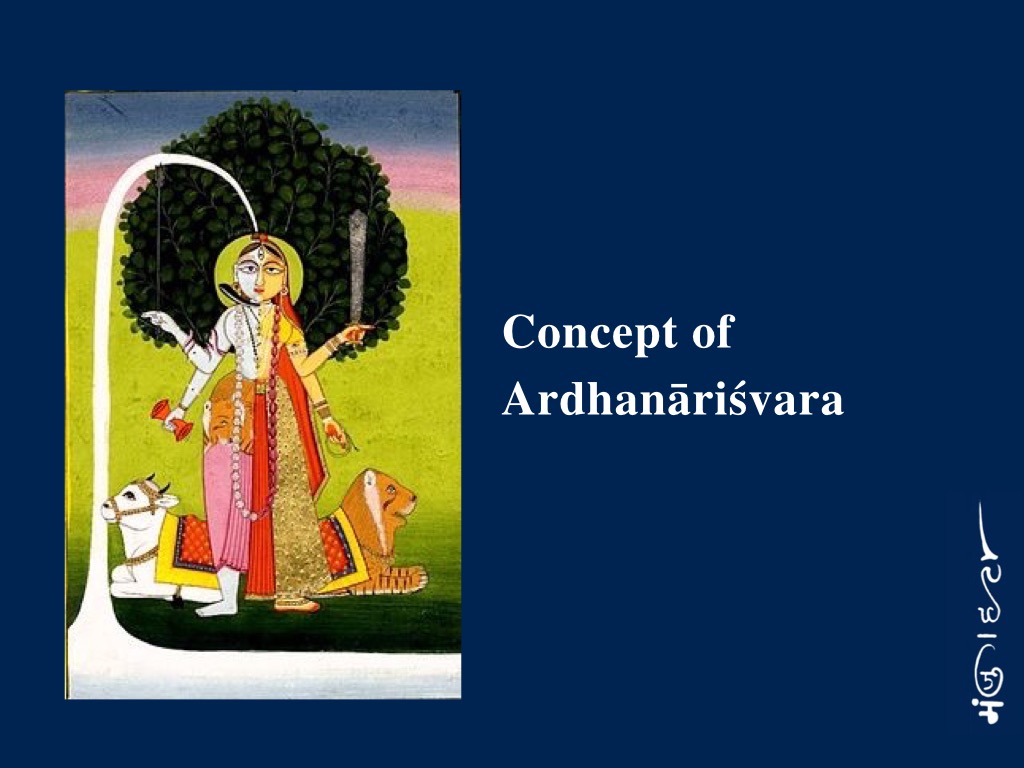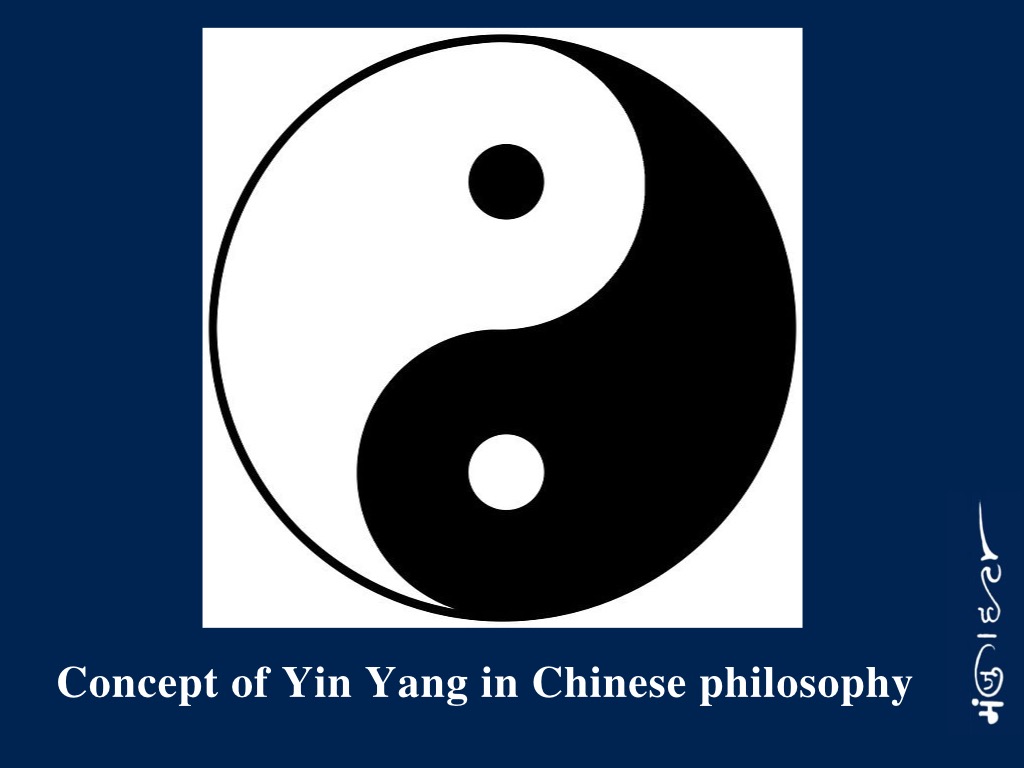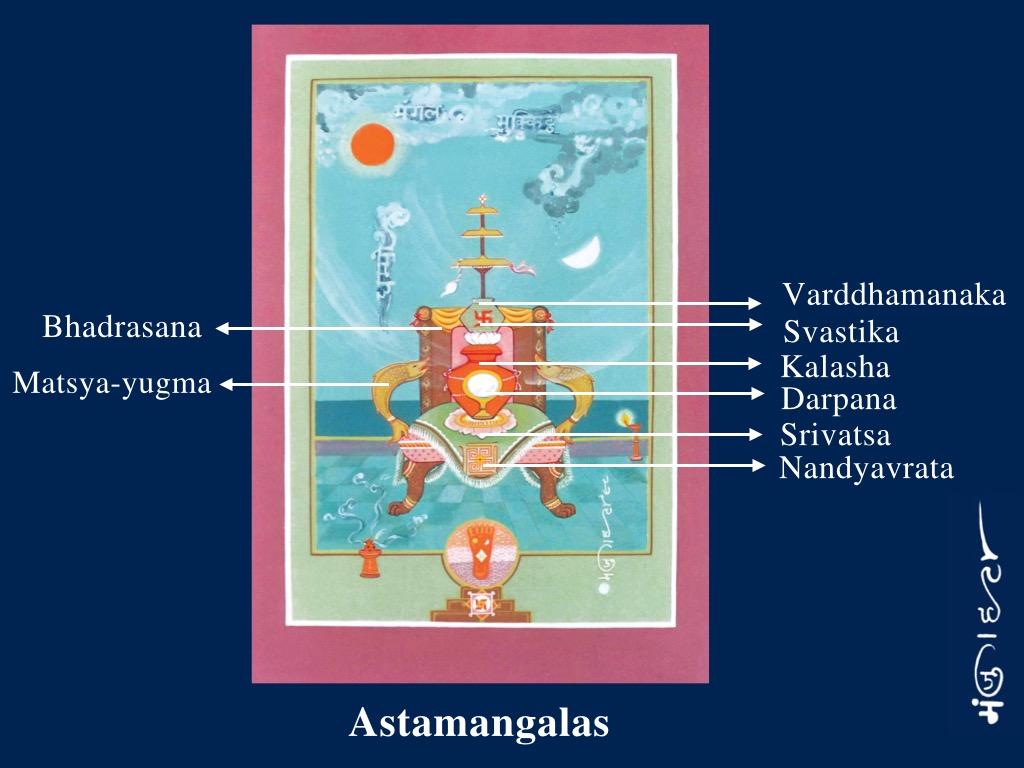Now we come to some other philosophies where we can find aspects of Anekāntavāda.

This concept is primarily based on Śakti-Śiva principle, where a female stands for Śakti and a male for Śiva, each having the same contribution at the root of the world.
The Ardhanārīśwaramūrti (icon) is one of the eight forms of the Lord Śiva. What strikes me most about the Ardhanārīśwaramūrti is its aesthetic appeal achieved through an immaculate counterbalancing of Śiva and Pārvatī, each maintaining individual identity, yet each, without making the other less important, remaining interdependent. This famous image is the very epitome of the harmony of the opposites, i.e., the male-female principles of creative forces, underscoring the concept of 'bheda/abheda'.

I would now like to point out that in Chinese tradition too, we find evidence of anekāntavāda. In Chinese philosophy the bright active male principle of the universe is called Yang and the dark, but not active, female principle of the universe is called Yin (pl. 21). These two principles subsume both contrariety and complimentarity: Yang is bright and active; Yin is dark and not active, whereas either stands as compliment to each other. It is difficult to think of the one in the absence of the another. It is not the Yin-Yang divide but the Yin-Yang complementarity that stands as the impelling principle of the universe. The argument of anekāntavāda, as has already been stated herein before, pivots on the theme of unison through polarity.

Now I would like to sum up my lecture by showing one last painting titled 'Adhyātma and Laukika dharma' (Spiritualism and mundane customs). In my view if we can become very clear in this concept, we can easily solve our problems.

The Astamangalas are - Svastika, Srivatsa, Nandyavrata, Varddhamanaka (powder-flask), Bhadrasana is a throne, a particular type of seat, kalasa (the full-vase), Darpana (mirror) and Matsya-yugma, pair of fish. These are often referred to in Jain texts, including canonical works, as decorating tops of architraves or ramparts, or placed on Caitya-trees, platforms, painted on walls and so on.
In my painting, I have not painted these Asta Mañgalas in eight boxes as is usually seen in Jain Manuscripts and other places. But I have put them together to make the combined appeal more powerful and effective. In the painting 'Adhyātma: Laukika dharma\ a prestigious throne has been painted with the hand-rests of a pair of fish. On the throne we can see a vardhamānaka (a pot) with an auspicious mark, svastika. Under vardhamānaka there is a pitcher, which symbolises completeness. A mirror has been painted on it and under the pitcher we can see a flower-shaped śrī-vatsa and then a blissful nandyāvarta (another form of svastika). These eight auspicious objects are worldly, down-to-earth, mundane-customs but from the transcendental perspective it is Adhyātma, and not these objects, that contains significance. 'Dhammo mañgala mukkittham', a verse taken from the Daśvaikālikasūtra, has been written on a rising cloud.
There is a holy footprint of a Deity (hta-pāda) shown at the lower part of the painting and it shows us the right knowledge about the transcendental perspective and the pragmatic perspective to make our life happy. Under the Deity's foot-print there are three steps and a Svastika on them. They depict the prosperity of the followers of the Deity in three times:
A person with spiritualism observes mundane customs also. In fact spiritualism and mundane customs are opposite to each other but they can be reconciled if we have a right attitude towards both of them that is if we observe mundane customs with the understanding that in reality they do not lead to any spiritual auspiciousness. Thus, we can see anekānta has defined both subtle and gross and presented their perspectives as niścaya naya or the transcendental perspective, and vyavahāra naya or the pragmatic perspective. When both of these perspectives are fused or mutually connected then we arrive at the conclusion.
Conclusion
After this one and a half hour talk we can conclude that solutions to many problems of life can be found through anekāntavad. If our view is non-absolutist and we look at opposing views from varying angles, then we can easily overcome differences and find an amicable solution. This core Jain philosophy touched my heart so much that I decided to paint this subject or as you may say give form to this formless philosophy. The essence of this theory and my short presentation can be summed up with this extract from Acarya Mahāprajña's book 'Anekānta, the Third Eye':
"Anekant has one rule: co-existence of opposites. Not only is existence in pairs they have to be opposing pairs. In the entire world of nature, in the entire universe of existence, opposing pairs exist. If there is wisdom there is ignorance. If there is vision, there is lack of it. If there is happiness then there is sadness too. If there is loss of consciousness, there is awakening. If there is death, there is life. There is the auspicious and the unauspicious. High and low. The disturbed and the undisturbed. There is gaining of strength and the loss of it".